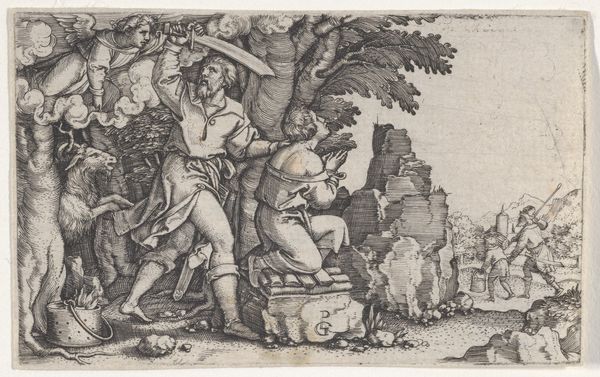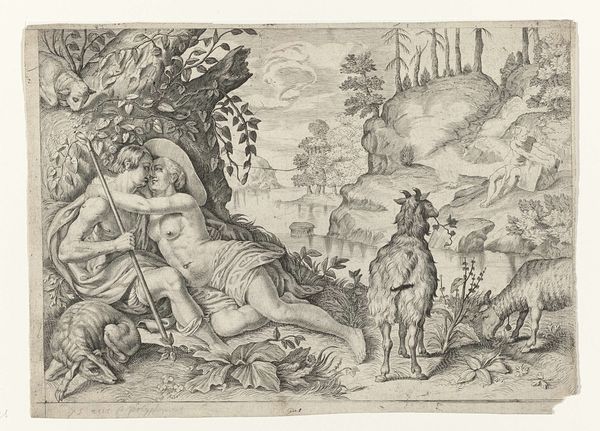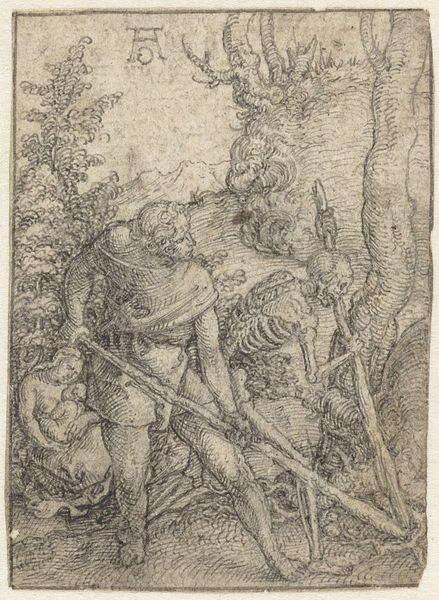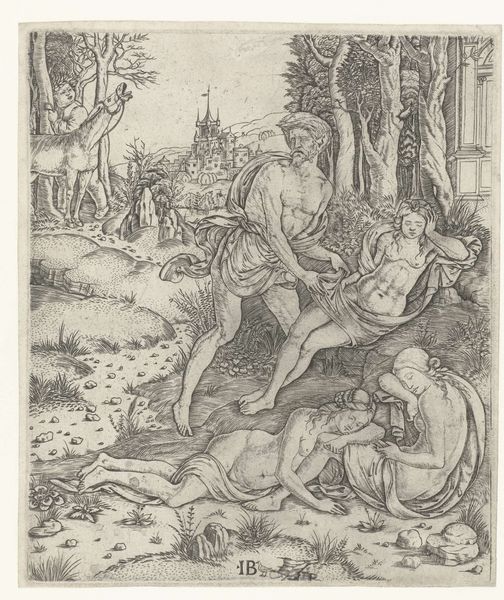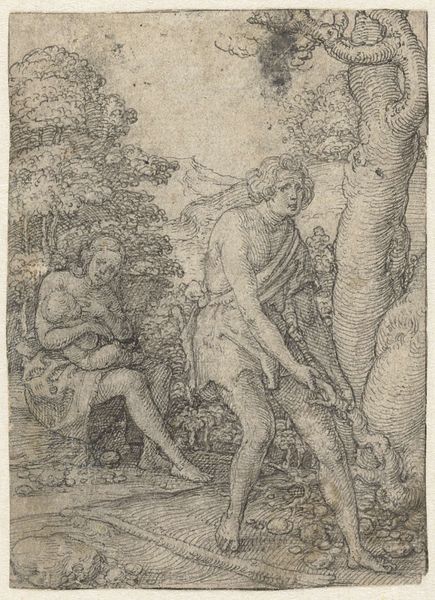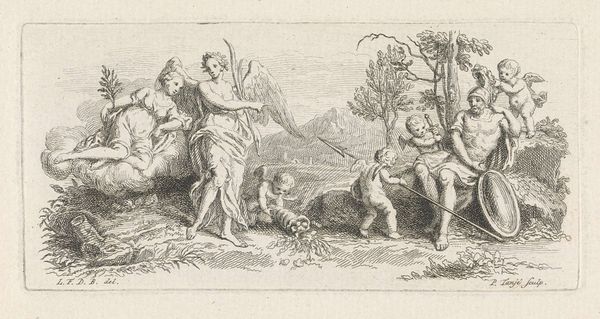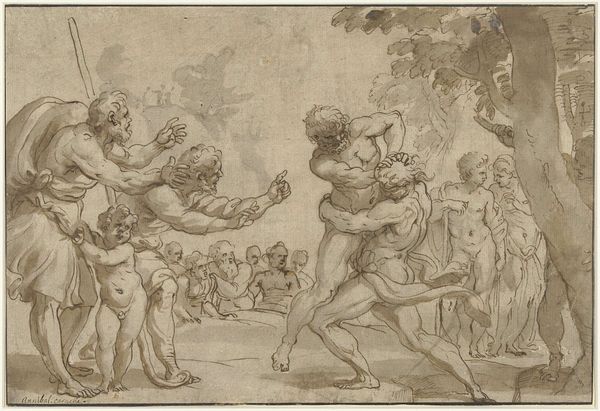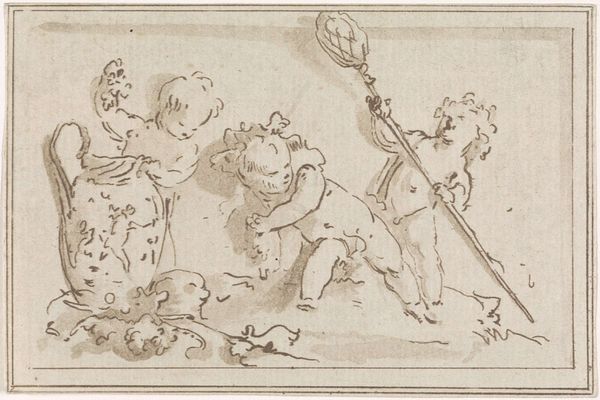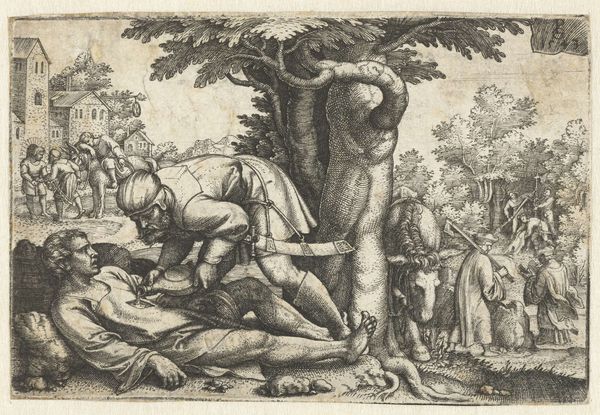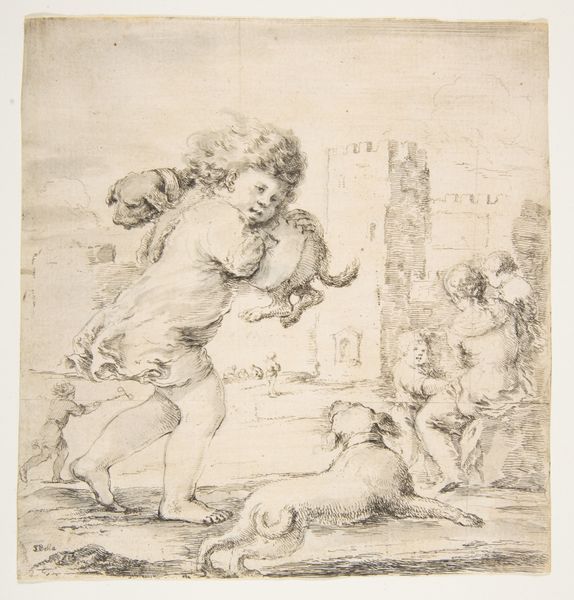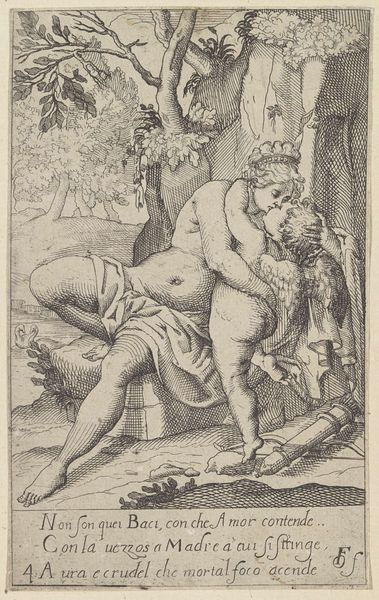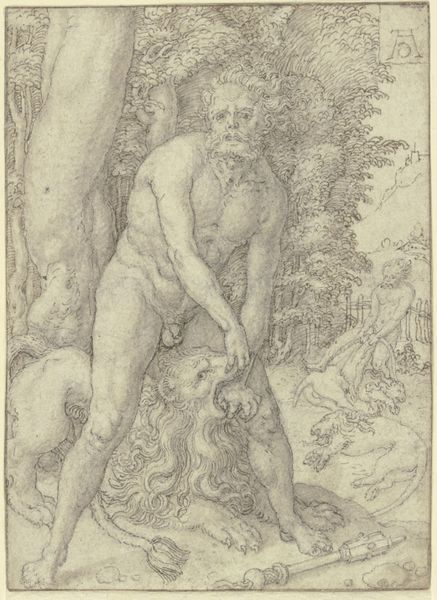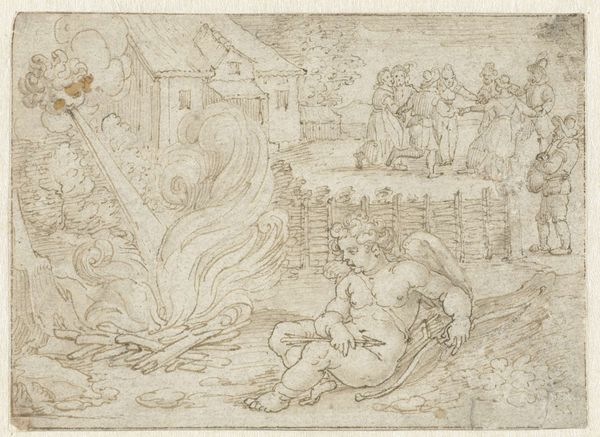
drawing, paper, ink, pen
#
drawing
#
allegory
#
landscape
#
mannerism
#
figuration
#
paper
#
ink
#
pen
Dimensions: height 87 mm, width 119 mm
Copyright: Rijks Museum: Open Domain
Curator: Welcome. We are looking at a drawing titled "Dappere liefde," or "Brave Love," created by Pieter Serwouters between 1606 and 1611. It’s rendered in pen and ink on paper. What are your first impressions? Editor: The figures seem trapped in a formal garden gone to seed—a world weary with allegory. I mean, just look at that cupid, puffing away… less about love's arrow, more about love’s obligation. And that melancholic mood. It gets me. Curator: Indeed. The drawing exemplifies the Mannerist style popular at the time, marked by elongated figures, complex compositions, and an emphasis on artifice over naturalism. Consider how the idealized forms contrast with what you perceive as the "weary" atmosphere. Editor: It’s that contrast that's delicious! It's as if Serwouters knew love could be both ridiculous and beautiful, staged and messy. It is like observing the struggles of passion placed as performance in the scene, as if they are play actors in their garden stage. The garden's manicured and chaotic state emphasizes the theme. It is real. Curator: And that staged element is crucial to understanding Mannerism's purpose. Artists sought to display their virtuosity, often incorporating mythological or allegorical themes— as seen here. Editor: And "Dappere liefde"—"Brave Love"— maybe this love isn't about rosy cheeks and harps. Maybe it’s the stubborn, awkward kind—the kind that sticks around when the garden’s overgrown. Perhaps the artist found himself, even reluctantly, in it? Curator: It's true. Considering the turbulent religious and political climate of the time, and the ongoing conflicts within the Netherlands, it makes us consider the deeper message about human resilience. Editor: Well, the figures appear to still go to garden everyday, play-acting and living… so maybe there’s still space to breathe, even in this melancholic dreamscape. I feel a tiny spark of hope now that I see the garden growing in wild patches; how beautiful is that? Curator: Precisely. “Brave Love” doesn’t deny hardship; rather, it suggests a willingness to engage with life. It also mirrors his role as an engraver, who often adapted other artist’s compositions, reinterpreting them through a unique vision, perhaps in such a love. Editor: Huh. I thought it was all doom and gloom. Thanks for pulling me back a little, and allowing me some air. I guess there's bravery even in overgrown allegories. Curator: And that, perhaps, is the brave love to see the unexpected still flourishing.
Comments
No comments
Be the first to comment and join the conversation on the ultimate creative platform.
